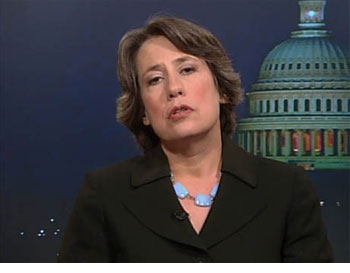
FDIC Chairwoman Sheila Bair spoke at the Wharton School today. Ms. Bair, who has become one of the banking industry’s most influential policy makers and outspoken critics, talked about reform to the nation’s mortgage services arena and the constructive role that the government should play in promoting housing in general and homeownership in particular.
Here are a few excerpts from her remarks :
FDIC: ” [N]ow that our housing bubble has burst, a critical task lies before us: rebuilding U.S. mortgage finance on a sounder footing, not only to restore the confidence of homeowners, investors and lenders, but more fundamentally to restore balance to our broader economy.
There is no single fix that will restore confidence or immediately repair the dislocations that have taken place in housing and mortgage markets. But if we are willing to take bold steps, and return to the fundamentals we can get back to a more rational world where consumers are protected, risks are contained, and our scarce resources are allocated to their highest and best use.
[W]e must recognize that the financial crisis was triggered by a reckless departure from tried and true, common-sense loan underwriting practices.Traditional mortgage lending worked so well in the past because lenders required sizeable down payments, solid borrower credit histories, proper income documentation, and sufficient income to make regular payments at the fully-indexed rate of the loan. Not only were these bedrock principles relaxed in the run-up to the crisis, but they were frequently relaxed all at once in the same loans in a practice regulators refer to as “risk layering.”
….
From 2003 through 2006, the share of total U.S. mortgage debt held by these private issuers more than doubled, from 9 percent to just over 20 percent. All told, over $2.1 trillion in private securities backed by risky subprime and Alt-A mortgages were issued between 2004 and 2006.
How was it that investors were so willing to invest so much in securities with such poorly underwritten loans?….Market discipline was tossed to the wind. It explains why trillions of dollars in faulty mortgage paper was issued before the home price bubble finally collapsed.
This pervasive breakdown in financial practices at the peak of the housing bubble points to the need for fundamental reforms in mortgage finance…
We need to have some basic underwriting guidelines that apply to all mortgages. Basic limits on loan-to-value and debt-to-income ratios, and consistent documentation requirements should be set for any loans held by a depository institution or sold to a securitization trust.”
- Bulenox: Get 45% to 91% OFF ... Use Discount Code: UNO
- Risk Our Money Not Yours | Get 50% to 90% OFF ... Use Discount Code: MMBVBKSM
Disclaimer: This page contains affiliate links. If you choose to make a purchase after clicking a link, we may receive a commission at no additional cost to you. Thank you for your support!

Leave a Reply